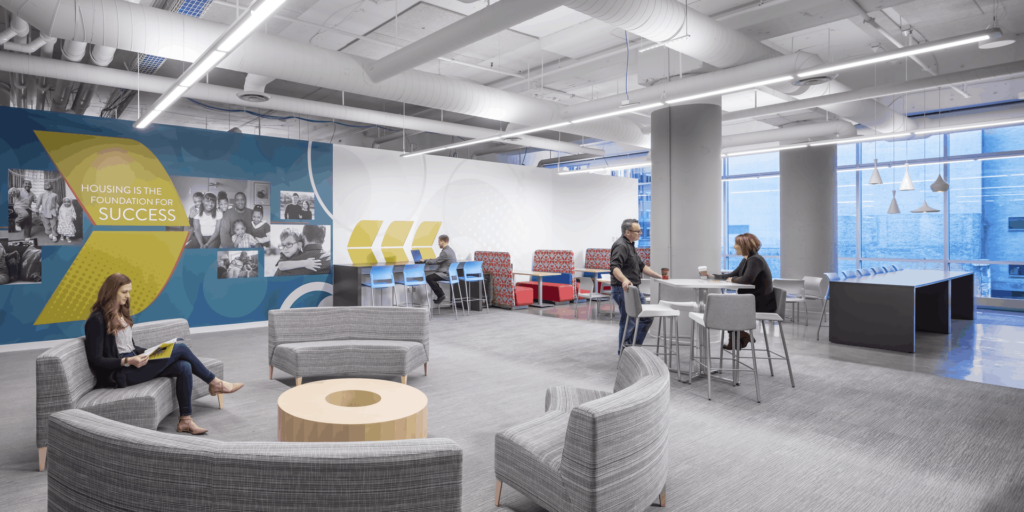A few years ago, BWBR started on the path of tackling equity through extensive staff training and tough conversations. We focused on developing a culture of curiosity, empathy, and humility. We started with a focus on gender equity, created a dedicated equity task force, and examined our policies and internal practices.
We accelerated this work throughout 2020 – not solely because of the events that inspired a national movement, but because the urgency was greater than ever before to confront the inequities in our world on the topics of race, class, age, physical ability, sexual orientation, family status, or gender.
BWBR started this next phase of our journey with intensive education programming, giving our employees the context and language for complex equity conversations. We host equity discussion cafes, a monthly equity book club, and staggered intranet education campaigns on cultural diversity and why language matters when talking about equity.
There are many compelling business cases for making these moves (to yield more innovation, to more accurately reflect our clients, to better recruit and retain clients and staff, and to make sure that every person feels heard, safe, and valued – to name a few), but we also need to acknowledge the impact equity has on what we do. How does equity, diversity, and inclusion specifically relate to architecture and design?
Architects and designers know the power of the built environment – it is the stated purpose of BWBR to transform lives through exceptional environments. If the built environment can inspire and calm and heal, isn’t it possible that it can also unintentionally harm or discourage?
Women may feel vulnerable when walking near a dark corner in a building or parking garage and think, “This wasn’t designed with my safety in mind.” LGBTQ+ folks are often the target of sexual harassment or assault in gender-segregated spaces. People of Color, who are statistically more at risk of violence, may feel trapped or unsafe in certain types of spaces. Low-income neighborhoods have often been forced to accommodate infrastructure that pollutes and disrupts. Neurodivergent folks may be overstimulated or made anxious by certain patterns or design elements. Folks with mobility or vision impairment encounter obstacles in the built environment every day.
In order to design environments to be used and enjoyed by as many people as possible, we have to understand not just our own perspective, but the perspectives of those who have different lived experiences than we do, who have different cultural values, traumas, and small or large things that help them feel safe and welcome in a space. Whether it’s thermal comfort, lighting, sightlines, anthropometrics that affect cabinet height or seat width, gendered spaces like locker rooms or bathrooms, mother’s rooms, ablution spaces, modesty panels, artwork, location of a site, or a see-through staircase, equity in design affects everyone. This isn’t a question of belief or political affiliation, it’s a question of humanity and respect.
To truly transform lives through design, BWBR must first identify and understand ways that barriers are present in the design process, the built environment, and in our own organization. Only then can we actively work to dismantle those barriers. This is a process – driven by aspiration and intention to contribute to meaningful, lasting change.
As we go forward, we realize that we don’t have all the answers. These issues are incredibly complex. However, we do know that we need to continue to advance as a firm and as a profession, and to do that, we need to design the built environment for all of us.








